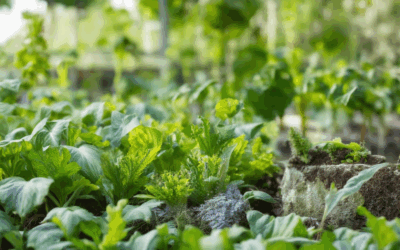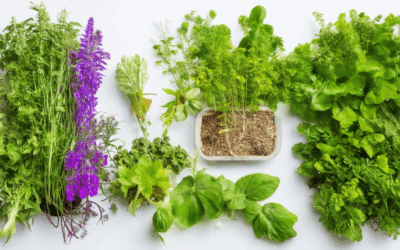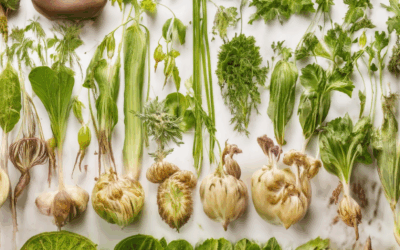If you’re passionate about gardening and love the idea of growing your own fresh produce, heirloom peppers might just be the perfect addition to your garden or even your windowsill. These unique varieties, passed down through generations, offer a rich flavor and vibrant colors that make them a favorite among food enthusiasts. Whether you’re a seasoned gardener or new to the hobby, growing heirloom peppers can be a rewarding experience that adds both beauty and flavor to your life.
Key Takeaways
- Heirloom Peppers Enhance Flavor and Nutrition: Enjoy richer tastes and higher nutrient content with these versatile plants.
- Adaptable to Various Growing Conditions: Thrive in diverse climates, making them ideal for many gardens.
- Eco-Friendly and Low-Maintenance: Perfect for organic gardening with minimal chemical use.
- Supports Local Biodiversity: Contribute to environmental health and genetic diversity.
- Ideal for Organic Gardens: Aligns with sustainable and eco-conscious practices.
- Rich in Antioxidants and Vitamins: Promote health with each bite.
- Self-Fertile and Easy to Save Seeds: Preserve heritage through simple seed-saving techniques.
- Disease-Resistant Plants: Reduce reliance on synthetic pesticides.
- Versatile in the Kitchen: Add vibrant colors and bold flavors to your meals.
What Should You Not Plant Peppers Next To?
Peppers require careful consideration when planning your garden layout. While they can be companion-planted with several crops, there are some plants that should not be grown nearby due to shared pest issues, nutrient competition, or growth habits. Here’s a breakdown of what to avoid:
- Beans: Legumes like pole beans or bush beans may attract pests that peppers dislike, but planting them too close can lead to excessive nitrogen in the soil, which peppers prefer in moderation.
- Brassicas: Vegetables like broccoli, cabbage, cauliflower, and kale belong to the Brassica family. They thrive in cooler temperatures and may compete with peppers for sunlight and nutrients, especially during peak growing seasons.
- Fennel: Fennel, known for its licorice-like scent, can repel pests that peppers might otherwise attract. However, their close proximity may lead to unwanted chemical interactions in the soil.
By avoiding planting peppers near these vegetables, you can minimize potential conflicts and maximize your garden’s productivity. Companion planting remains a key strategy for harmonious gardening.
What is the Trick to Growing Peppers?
To successfully grow peppers, attention to a few key factors is crucial. Here’s a detailed guide to help you master the art of cultivating peppers:
1. Sunlight Requirements
Pepper plants thrive in full sun, requiring at least 6-8 hours of sunlight daily. Ensure they receive adequate sunlight to produce abundant fruit and vibrant colors.
Learn more about optimizing sunlight for your garden .
2. Soil Preparation
Prepare the soil by mixing in organic matter like compost or aged manure. This enhances soil fertility and promotes healthy root development. For best results, test your soil pH levels to maintain optimal conditions for pepper growth.
Discover effective soil preparation techniques .
3. Watering Techniques
Pepper plants require consistent moisture but dislike overwatering. Water deeply at planting time and during flowering periods, reducing frequency once fruits form. Consider using drip irrigation systems for efficient water delivery.
Explore advanced watering methods .
4. Proper Spacing
Space pepper plants 18-24 inches apart within rows to allow airflow, preventing fungal diseases. Row spacing should be approximately 36 inches to maximize space efficiency.
Find expert spacing recommendations .
5. Fertilization
Apply a balanced fertilizer, such as 10-10-10, at planting time and again during the growing season. Avoid excessive nitrogen, which can lead to excessive foliage growth at the expense of peppers.
Learn about optimal fertilization practices .
6. Pest Control
Common pests include aphids, spider mites, and whiteflies. Integrate pest control measures like ladybugs or beneficial insects, along with organic sprays, to maintain plant health.
Discover effective pest management strategies .
7. Support Systems
Pepper plants benefit from sturdy supports, especially for heavier varieties. Use stakes, cages, or trellises to prevent plants from sprawling and to facilitate better air circulation.
Master plant support techniques .
8. Harvesting Tips
Peppers ripen quickly after turning red or yellow. Harvest frequently to encourage new fruit production and avoid overloading plants. Handle gently to avoid damaging the plants.
Find harvesting best practices .
By following these tips, you can enjoy a bountiful harvest of flavorful peppers year after year. Happy gardening!
Best Month to Plant Peppers
The optimal time to plant peppers depends on your geographic location and climate. Generally, peppers prefer warm weather and should be planted after the last frost, which typically occurs in late March or early April in most regions.
- Planting Time: In cooler climates, peppers can be started indoors in late January or early February. This allows them to develop earlier and reduces the risk of frost damage once transplanted outdoors.
- Seed Starting: If planting directly, wait until the soil temperature reaches around 70°F (21°C) for consistent germination. In warmer climates, you can sow seeds directly in late March or early April.
- Transplanting: Once the threat of frost has passed, typically by mid-April, pepper plants can be moved from indoor containers to their permanent positions in the garden.
Pepper plants thrive in well-drained soil and full sun. They require regular watering and fertilization throughout their growth cycle. For the best results, choose varieties suited to your climate and soil type.
For more tips on growing peppers, check out our gardening resources or visit GardenWeb for additional insights.
What Are Heirloom Peppers?
Heirloom peppers are a type of open-pollinated pepper plant that has been passed down through generations of gardeners and farmers. Unlike hybrid varieties, which are bred specifically for commercial purposes, heirloom peppers are preserved and propagated for their unique traits, flavor, and resilience. These plants have been around for centuries and are treasured for their ability to thrive in diverse growing conditions.
Benefits of Heirloom Peppers:
- Superior Flavor : Heirloom peppers often have a richer, more complex flavor compared to modern hybrids. Their taste is considered sweeter and more nuanced.
- Higher Nutrient Content : Many heirloom varieties retain more nutrients due to their non-genetically modified nature.
- Disease Resistance : These plants are known for their natural resistance to pests and diseases, reducing the need for synthetic chemicals.
Growing Heirloom Peppers:
- Location : Choose a sunny spot in your garden or patio. Heirloom peppers require at least 6 hours of sunlight daily.
- Soil Preparation : Use well-draining soil with compost to improve fertility. Proper drainage is crucial to prevent root rot.
- Planting Time : Sow seeds indoors 8–10 weeks before the last frost date. Transplant seedlings outside after the threat of frost has passed.
- Care Tips :
- Water regularly but avoid overwatering to prevent fungal issues.
- Provide support with stakes or a cage as plants grow tall.
- Pollinators like bees are attracted to heirloom peppers, aiding in fruit production.
Popular Varieties:
- Bell Pepper : A classic choice known for its sweet flavor and vibrant color.
- Jalapeño : Spicy and commonly used in salsas and dishes.
- Ancho Pepper : Dried and used in traditional Mexican cuisine.
- Cherry Bomb Pepper : Small, extremely spicy, and popular in hot sauces.
By growing heirloom peppers, you contribute to preserving biodiversity and enjoy a rewarding gardening experience. For more tips and resources, visit Old Seed to learn about sustainable gardening techniques and heirloom variety selection.
Do Heirloom Peppers Cross-Pollinate?
Heirloom peppers generally do not require cross-pollination to produce fruit, as they are self-fertile. However, if you are growing a mix of heirloom and hybrid peppers, cross-pollination may occur, potentially leading to new variations in the offspring.
The Basics of Pepper Pollination
- Peppers are flowering plants that can be pollinated by insects or wind.
- Heirloom peppers are typically self-pollinating, meaning they do not require external pollinators to produce fruit.
- Self-pollination ensures that the plant’s own pollen fertilizes the stigma, resulting in the formation of peppers.
Impact of Cross-Pollination on Heirloom Peppers
- If you are saving seeds from a garden that grows both heirloom and hybrid peppers, cross-pollination can occur, leading to unexpected traits in the next generation.
- This cross-pollination can result in hybridization, where the characteristics of both parent plants influence the offspring.
- To prevent unintended hybridization, it is important to isolate heirloom peppers from hybrid varieties during flowering.
Benefits of Isolation
- Isolation helps maintain the purity of heirloom varieties, preserving their unique traits and flavor profiles.
- Without isolation, heirloom peppers may become hybridized over time, losing their distinct characteristics.
- For serious seed savers, physical separation of plants or using barriers like mesh can help prevent cross-pollination.
When Cross-Pollination Matters
- Cross-pollination becomes significant if you are experimenting with creating new pepper varieties.
- Int intentional crosses between different heirloom varieties can lead to interesting and unique pepper types.
- However, for most home gardeners, cross-pollination happens naturally, though it is something to be aware of when saving seeds.
For more information on heirloom peppers and pollination, check out our guide on Saving Pepper Seeds and our article on Heirloom vs Hybrid Peppers .
Why Are Heirloom Vegetables Better?
Heirloom vegetables offer several advantages over hybrid or genetically modified varieties, making them a preferred choice for many gardeners and food enthusiasts. Here’s a breakdown of their benefits:
Higher Genetic Diversity
Heirloom vegetables possess greater genetic diversity due to their natural breeding methods. This diversity allows them to adapt to various environments, producing more robust and resilient plants capable of thriving in different conditions.
Superior Flavor and Nutrition
These vegetables tend to have richer flavors and higher nutrient content. Their non-hybrid nature often preserves essential vitamins, minerals, and antioxidants that may be lost in hybrid varieties bred for appearance and shelf life.
Easier Seed Saving
As open-pollinated plants, heirlooms can have their seeds saved from one growing season to the next. This practice supports sustainability and self-reliance, reducing dependence on commercial seed suppliers.
Natural Resistance to Pests and Diseases
Heirlooms are generally more resistant to pests and diseases because they haven’t been genetically altered for susceptibility. This trait reduces the need for synthetic pesticides, promoting eco-friendly gardening practices.
Support for Biodiversity
By preserving heirloom varieties, we contribute to biodiversity. These plants provide a genetic library that researchers can study, aiding in developing disease-resistant crops and improving agricultural sustainability.
Environmental Benefits
Heirlooms often require less water and fewer chemicals to grow, making them a more sustainable option. Their ability to adapt to diverse conditions also minimizes environmental impact.
While heirlooms have many advantages, it’s important to note that they may be less widely available and require more attention in the garden. However, their benefits far outweigh these considerations, making them a worthwhile choice for those seeking natural, flavorful, and sustainable produce.
For more information on heirloom gardening and sustainable practices, visit Old Seed .








0 Comments